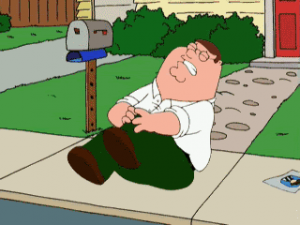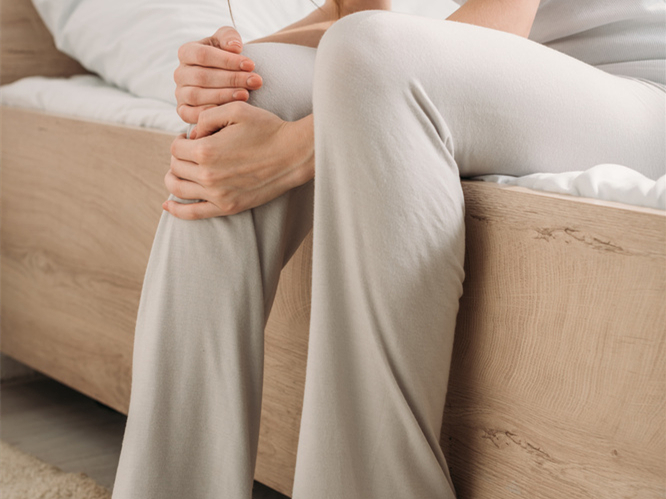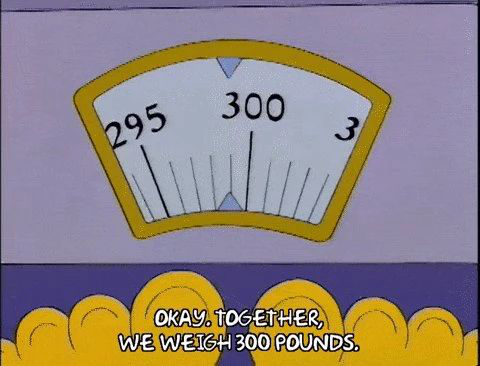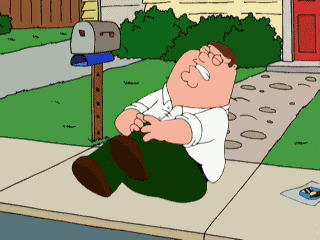
As the weather turns cold, your body may not feel the chill yet, but your knees are already reminding you that winter is here.
Even if you wear long johns, your knees will feel cold and hurt when you see the wind. This is actually inflammation that has hit the body.

Cool knees may provoke mild inflammation
Cold knees, many people subconsciously think that it is caused by not keeping warm. However, even with thick clothes, some people still feel uncomfortably cold in their knees.
To some extent, the temperature of the knee is a weather vane for knee joint health. Compared with keeping warm, people with cold knees should consider factors such as knee joint disease or Impaired local microcirculation.
The most common cause of cold knee joints is knee synovitis, followed by degenerative diseases such as patellar softening and patella osteoarthritis. These diseases belong to autogenous aseptic inflammation.
“Inflammation” is a defensive response of the human body after being stimulated by internal and external environments:
Inflammation caused by bacteria and viruses is called “infectious inflammation”; inflammation caused by non-biological factors such as physical damage and chemical stimulation is called “sterile inflammation”.
Under the stimulation of inflammatory factors, the local nerves and microcirculation of the knee joint will become sensitive, which in turn makes the patient feel cold in the knee. This can be used as a signal of mild inflammation of the knee joint and a sign of early degeneration of the knee joint.
When there is a problem with the blood supply around the knee joint, the synovial cells of the joint will be passive, the cartilage fragments that have been worn down are not cleaned, and the fresh joint synovial fluid cannot be supplied, and the inflammatory substances produced cannot be properly cleaned.
Over time, the knee joint becomes more and more fragile, and both weight-bearing capacity and activity will be greatly reduced.
Do 4 things to help your knees “keep out the cold”
As the largest and most complex flexion and extension joint of the human body, the knee joint is like a bearing, bearing the weight of the entire upper body and thigh. Once catching a cold, it may cause inflammation and burden the body. To avoid cold knees, you need to pay attention to the following points daily.
Do keep warm
The knee joint is a superficial joint of the limbs, and changes in external temperature can easily cause changes in the joint surface and internal temperature. Cold can cause limb vasoconstriction and microcirculation stasis, which can lead to the accumulation of metabolites in the joint soft tissues and induce aseptic inflammation. Wear thicker clothing for your legs, so it is best not to catch the cold.
keep weight
Being overweight will put excessive load on the knee joint, causing premature joint degeneration and inflammation.

Active exercise
Appropriate functional exercise can promote the flow and secretion of synovial fluid in the joints and enhance the functionality of ligaments and muscles. The strong muscles of the legs become an energy pump for blood flow. The powerful contraction and stretching of the muscles can pump more blood to the joint cavity, thereby enhancing joint microcirculation.
Wear kneepads during exercise
Wearing a warm knee pad is a simple and effective measure for the elderly to protect the knee joints. What needs to be reminded is that sports knee pads that can help the legs forcefully, it is best to only wear them during exercise, do not usually wear them, so as to avoid the knee joints becoming dependent on it and becoming more and more vulnerable.
For patients who have already experienced symptoms such as pain and swelling in the knee joint, seek medical attention in time to find knee joint disease as soon as possible.
Hot compress to help the knee joint “extend life”
In addition to keeping warm and actively exercising, artificial heat is also an effective way to protect the knee joint. Hot compress has the effects of expanding blood vessels, improving local blood circulation, and promoting local metabolism. It can also relieve muscle spasm, relax nerves, and improve the softness of tendons.
There are two main ways of hot compress:
Dry hot compress is a hot compress with a hot-water bag and put it on the knee for 20 to 30 minutes each time, 1 to 3 times a day.
hot-wet compress is to soak a towel or gauze in a hot water basin, take it out and twist it to half dry, put it on the knee, and cover with a cotton pad to prevent heat loss. Change it every 5 minutes and put it for 20-30 minutes, it can be applied 1~3 times daily. Knead a large area around the knee joint for 2 to 5 minutes after hot compress to promote blood circulation.
It should be reminded that the hot compress temperature should not be overheated. People with acute inflammation, thrombophlebitis, peripheral vascular disease, and wounded skin should not be used.
4 tips to “relieve” the knee
Knee arthritis is a common disease among middle-aged and elderly people, and nearly one-third of adults worldwide suffer from it. Knee joint pain has a high incidence among middle-aged and elderly people, which seriously affects the quality of life. Therefore, it is necessary to take care of the knee joint from a young age.
1 Eat more calcium-rich foods
Calcium supplementation can effectively protect the knee joints. It should be based on dietary supplements. Pay attention to balanced nutrition. Eat more dairy products (such as fresh milk, yogurt, cheese), soy products (such as soy milk, soy flour, tofu, bean curd stick , etc.), and vegetables (Such as carrots, Chinese cabbage, Edible rape) and seafood such as seaweed, kelp, shrimp, fish, etc., at the same time, more sunlight to promote calcium absorption.
2 change the way of exercise
Many knee injuries are caused by improper exercise. American sports medicine experts suggest that alternate combinations of brisk walking, slow walking, forward walking, and backward walking, combined with indoor cycling, swimming, leg raising, and other exercises are the best exercise methods to protect the knees, and they will cause the least damage to the knees.

When climbing, skipping, climbing stairs, squatting, and running, especially when going down the mountain and down the stairs, the knee joint bears the most pressure. You can switch to swimming or cycling to lose weight. At the same time, pay attention to training thigh strength to share the pressure on the knee joint.
3 reduce squatting and kneeling
From clinical observation, there are more women with knee joint disease than men. One of the important reasons is that women squat more times in their lives, and squatting and kneeling cause more damage to the knee joint.
Don’t do long-term squatting movements, don’t squat to do housework or kneel to wipe the floor. Elderly people who like to do Tai Chi, don’t squat too low, just stand high and do Tai Chi.
When standing up and sitting down, make sure that the knee joint bends slightly and appropriately, and then stand up or sit down to protect the knee joint.
4The soles should not be too thin
It is best to wear comfortable, elastic sports shoes during exercise to reduce knee pressure. In daily life, the shoe heel should be 2 to 3 cm, and the sole should not be too thin, otherwise it will have an adverse effect on the knee.
Comments